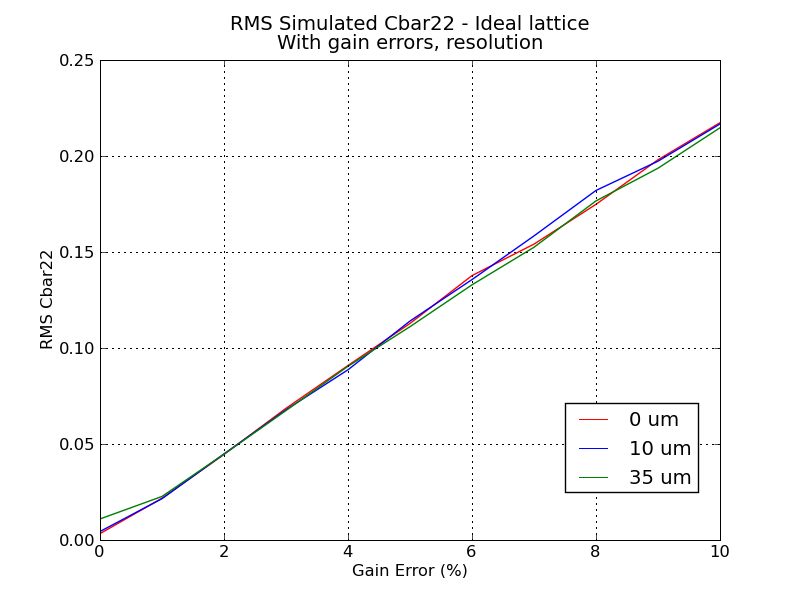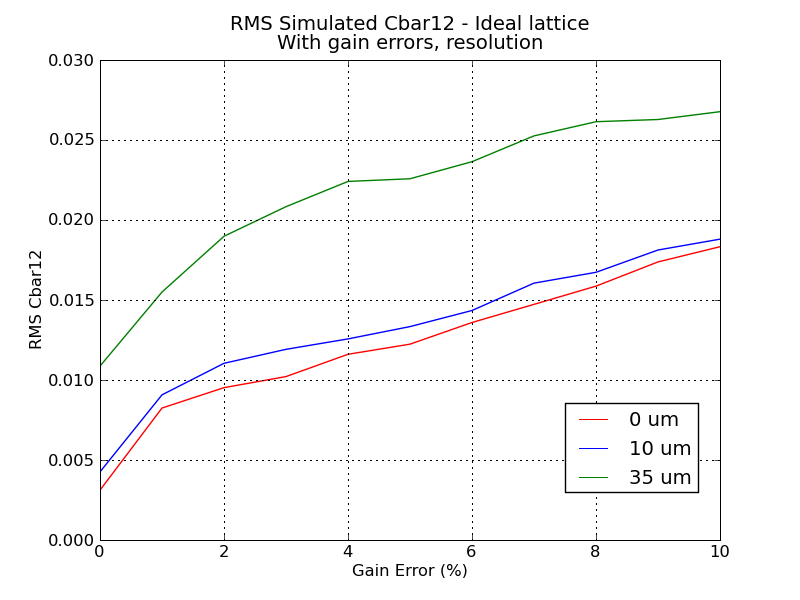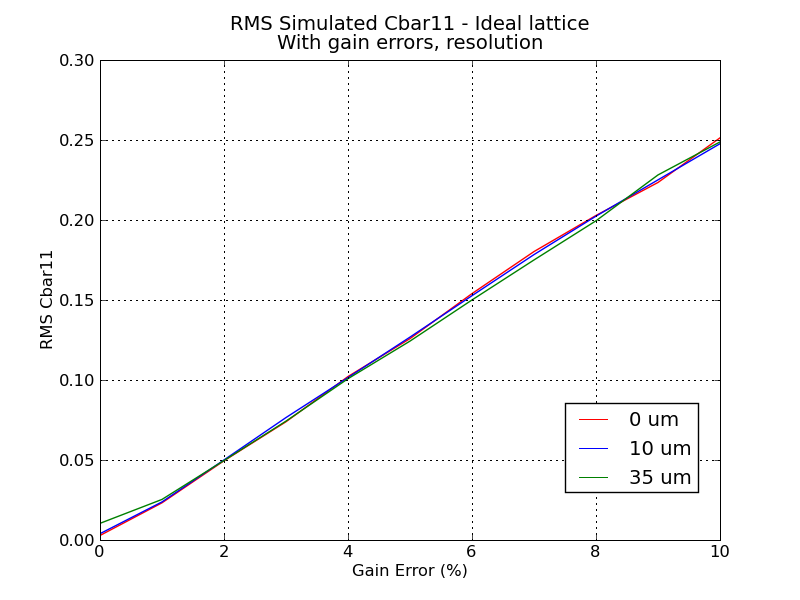


Results of 9/21/09 simulations of cbar measurements with gain errors and resolution were not valid! (See note on that page) Re-run those jobs:
Repeat the exercise, this time introducing sk_q02w @ +0.01 and looking at ('meas' - model):
Attempt to improve the quality of fits by using Numerical Recipes routine realft(). Using sk_q02w @0.01, 1024 turns, and (x0,y0) = (0.1,0.1)mm (standard parameters):
Note that when using FFT to find tunes, the number of turns must take the form n_turns = 2^N. After digging a bit, it looks like the resolution of the FFT method isn't as good as Bmad's calculations of the fractional tunes. Bmad stores the tunes as real(rp)'s, which have high precision. Increasing the number of turns from 1024 --> 4096 increased the agreement between Bmad and 'measured' tunes slightly, however increasing the number of turns further to 8192 decreased the agreement. Not sure what to make of this.
However, since Bmad does store the tunes to a high precision, we don't necessarily -need- this FFT method. Revert back to original method for now (getting tunes from Bmad, not FFT).
Perhaps the initial condition (x0,y0) = (0.1mm,0.1mm) is not optimal for minimizing errors in Cbar simulated data. Try:
Results: The best amplitudes seem to be ~0.5mm or less. Above 1mm we start seeing very poor Cbar values (RMS ~0.2 or higher). Offsetting in only one plane at a time doesn't seem to improve the RMS values.
Options for the Cbar simulation program now include output specific to CESRv and Tao/Tao_Cesr. Both input styles have been tested and are functional. This will allow us to start fitting BPM tilts to Cbar22 data.
Initial tests in CESRv suggest everything is working properly. When 'ideal' data is read in (no BPM errors or coupling), RMS phase (data-des) ~0.04deg and typical RMS Cbar (data-des) ~ 0.003.
Turn on sk_q02w @0.01, repeat exercise after fitting all skew quads. Too much degeneracy in skews, CESRv doesn't find one large K at sk_q02w but rather a distribution of skews at K~0.03. Restrict to only using sk_q02w and fit-- now it finds K~0.007. Manually setting sk_q02w|model = 0.01, we find RMS phase (data-des) ~0.16deg. RMS Cbars (data-model) ~ 0.006-0.009.